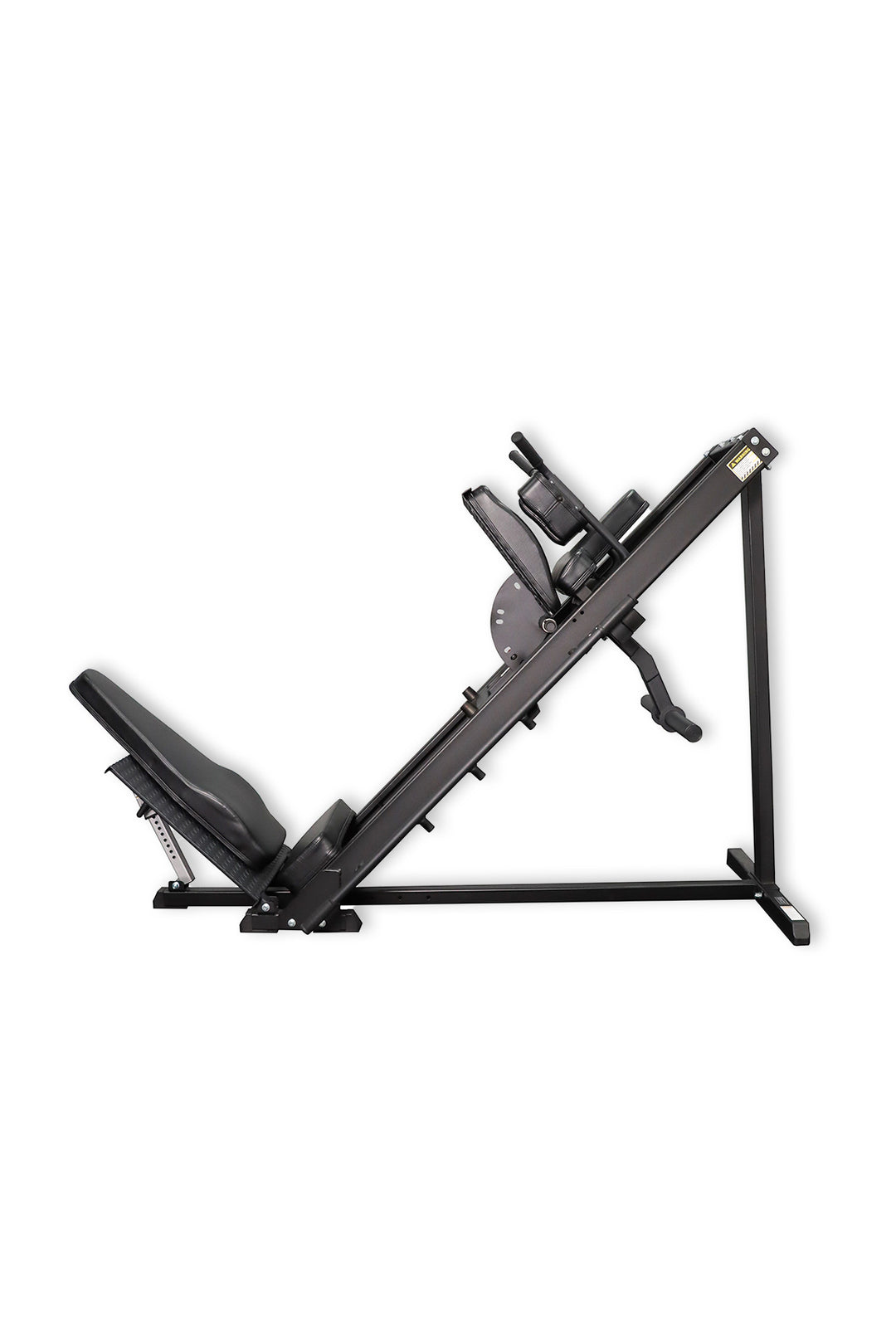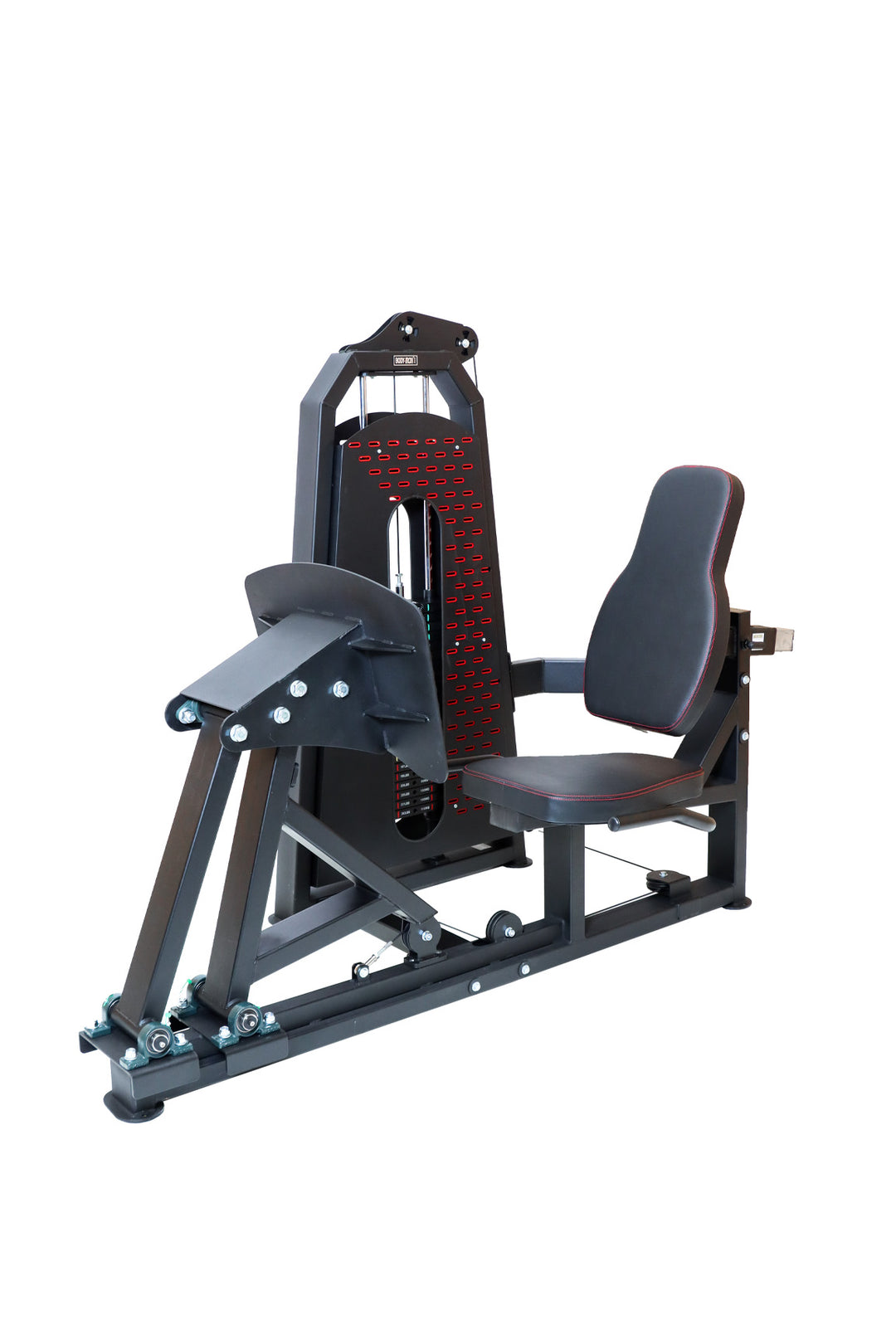Leg Press Machines
The leg press machine is an indispensable tool for building explosive lower body power. Its versatility makes it a valuable asset for both home and commercial gyms. The leg press helps individuals achieve a well-rounded lower body development by effectively targeting the quadriceps, hamstrings, and glutes. Whether you're aiming for increased athletic performance, improved functional strength, or simply a toned physique, the leg press machine provides a safe and effective pathway to achieving your fitness goals.
Target Multiple Muscle Groups
Leg presses are a highly effective exercise for developing strength and building muscle mass in the:
- Quadriceps: The large muscles on the front of your thighs.
- Hamstrings: The muscles located at the back of your thighs.
- Glutes: The muscles in your buttocks.
These muscle groups are fundamental for both athletic performance and everyday activities, such as walking, running, jumping, and climbing stairs.
Lower Impact on Joints
Compared to squats and other free-weight exercises, leg presses offer a more controlled and stable movement, significantly reducing stress on the knees and lower back. This makes them a valuable option for individuals with existing joint concerns or those recovering from injuries.
Progressive Overload Made Easy
Leg press machines feature adjustable weight and resistance, allowing users to increase the challenge over time gradually. This makes them suitable for both beginners who are just starting their fitness journey and experienced lifters seeking to improve their strength and muscle mass continuously.
Efficiency and Safety
Leg press machines are ideal for isolating lower body muscles, allowing for efficient and effective training while maintaining proper form and minimizing the risk of injury often associated with free-weight exercises.
Types of Leg Press Machines
- Seated Leg Press: This compact design is ideal for home gyms or spaces with limited room. It allows for a full range of motion, making it a versatile option for a comprehensive leg workout.
- 45-Degree Leg Press: Designed for more intense leg training, this machine offers a greater weight capacity and a steeper angle of incline. It is often preferred in commercial gyms due to its ability to accommodate heavier loads.
- Vertical Leg Press: This space-efficient option provides a unique training angle, allowing for a different muscle activation compared to traditional leg press machines. It's an excellent choice for maximising lower-body workouts in smaller spaces.
For other lower body machines, we also have hack squat machines, leg press hack squat combination machines, and leg extension machines available at World Fitness Australia.
Key Features to Look For
- Adjustable Resistance & Seat: The machine should offer flexibility for users of various sizes and experience levels by allowing for easy adjustments to both weight and seat position.
- Ergonomic Design: Comfort is paramount. Look for features like padded seats, smooth-gliding rails, and ergonomic handles to minimise strain and maximise comfort during your workouts.
- Safety Mechanisms: Prioritize safety with features like built-in safety stops, lockout positions, and sturdy construction to ensure a secure and controlled training environment.
- Space Considerations:
- Home Gyms: To maximise the use of your home gym space, consider compact designs, foldable options, or space-saving features.
Commercial Gyms: Choose heavy-duty models with a higher weight capacity and durable construction to withstand the demands of multiple users.
FAQs
What muscles are targeted by the leg press machine, and are there variations in muscle engagement depending on foot position?
The leg press machine primarily targets the quadriceps, hamstrings, glutes, and calves. Variations in foot position can alter the focus on these muscles. For example, placing your feet higher on the platform emphasises the hamstrings and glutes, while a lower position targets the quadriceps more. A wider stance engages the inner thighs, and a narrow stance shifts focus to the outer quads.
Can leg press machines be used for beginners?
Yes, leg press machines are suitable for beginners as they provide a controlled movement that reduces the risk of improper form. Beginners should start with lighter weights and focus on mastering the technique before increasing resistance.
How can I use the leg press machine to build power and hypertrophy (muscle size)?
To build power, use heavier weights and perform 3 to 6 repetitions per set with explosive movements. For hypertrophy, use moderate to heavy weights and aim for 8 to 12 repetitions per set, focusing on slow, controlled movements to maximise muscle engagement. Incorporating progressive overload over time will help achieve both goals.
What’s the correct form on the leg press machine to avoid injury?
To avoid injury, sit with your back firmly against the seat and feet shoulder-width apart on the platform. Lower the platform slowly until your knees form a 90-degree angle without letting them collapse inward. Push back up without locking out your knees at the top. Always maintain a controlled movement and avoid using excessive weight that compromises form.
How often should I use the leg press machine in my leg workout routine?
Using the leg press machine 1 to 3 times per week is effective, depending on your training goals and overall workout routine. Allow at least 48 hours of recovery between sessions to prevent overtraining and support muscle recovery.
Is the leg press machine better for strength or endurance training?
The leg press machine can be adapted for both strength and endurance training. Using heavy weights with fewer repetitions targets strength, while lighter weights with higher repetitions improve muscular endurance. Adjust your training approach based on your specific fitness goals.
Can the leg press machine cause knee pain, and how can I avoid it?
The leg press machine can cause knee pain if misused, such as lowering the platform too far or locking out the knees. To avoid this, maintain proper form, align the knees with the toes, and use a comfortable weight. If you experience knee pain, consult a fitness professional or physical therapist for guidance.






